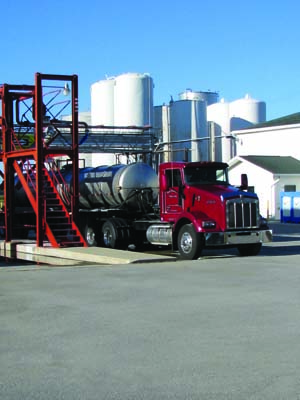STEEL TANKS FOR STORING AND TRANSPORTING PESTICIDES AND FERTILIZERS

STEEL TANKS FOR STORING AND TRANSPORTING PESTICIDES AND FERTILIZERS
Fred Whitford, Coordinator, Purdue Pesticide Programs
Dennis Nowaskie, Superintendent, Southwest Purdue Agricultural Center
Brad Peas, Sales Representative, AgroChem
Dean Sink, Liquid Production Supervisor, Co-Alliance
Ernie Fuller, retired, Tank Boilermaker
Gerry Bunn, Quality Control Manager, Dilling Group
Chuck Kominski, Director of Technical Services, Tessenderlo Kerley Services
Todd Cobbs, Crew Leader, The Andersons
Gerry Blase, Manager, Asplundch Railroad Division
Andy Schmerge, Sales, Fertilizer Dealer Supply
Kevin Leigh Smith, Editor, Purdue Agriculture Communication
Mild Steel Tanks . . . . . . . . . . . . . . . . . . . . . . . . . 4
Is Mild Steel Right For You? . . . . . . . . . . . . . . . 7
Installing . . . . . . . . . . . . . . . . . . . . . . . . . . . . . . 19
Inspecting and Maintaining . . . . . . . . . . . . . . . 23
START HERE KEERTY
Stainless Steel Tanks . . . . . . . . . . . . . . . . . . . . . . 32
Questions for Stainless Transport Tanks . . . . . . 35
Installing Tanks on Trucks and Trailers . . . . . . 43
Inspecting and Maintaining . . . . . . . . . . . . . . . 49
Repairing Tanks . . . . . . . . . . . . . . . . . . . . . . . . . . 52
Purchasing Used Tanks . . . . . . . . . . . . . . . . . . . . 58
Conclusion . . . . . . . . . . . . . . . . . . . . . . . . . . . . . . 68
Acknowledgments . . . . . . . . . . . . . . . . . . . . . . . . 70
Disclaimer . . . . . . . . . . . . . . . . . . . . . . . . . . . . . . 70
IMAGE HERE
Tanks that transport and store pesticides and fertilizers can be made from many different materials, including polyethylene, fiberglass, and steel. It makes a difference which tank material you choose. Each material has unique properties that determine the kinds of products you can safely store and transport in them .
The material that works best depends on how you will use the tank. You need to select your tank’s construction material based on its compatibility with the material it will hold, how long you expect the tank to last, how much preventative maintenance you want to perform, and how much you want to pay up front.
To buy the right storage and transportation tanks, you will need to do some research. That includes asking the right questions and making accurate comparisons of product lines. This publication explores the aspects of purchasing and using mild steel and stainless steel tanks for farms, businesses, and public agencies. It provides important questions you should ask before you buy, offers tips to properly install tanks, and establishes guidelines for inspection and maintenance.
This publication is a companion to Poly Tanks for Farms and Businesses (Purdue Extension publication PPP-77) and Fiberglass Tanks for Storage, Transport, and Application: Designing Your Customized Tank (PPP-93). Both publications are available from the Education Store, www.the-education-store.com. If you are thinking about adding new tanks or replacing existing ones, review these publications. This information should help you decide which tanks are most appropriate for your operations.
IS MILD STEEL RIGHT FOR YOU? test
Is Mild Steel Right For You?
When you purchase a mild steel tank, you should always consider the ways you can delay the development and spread of pitting and rust. Here are 16 questions you should always ask before choosing a tank. The first six address pitting and rust.
1. What is the pH of the product you will store in the tank? This is one of the most important questions to ask. Acidic agents like battery acid (with a pH value of 2) are very destructive to steel. The lower the product’s pH, the more acidic and destructive the liquid is to mild steel. The lower the product’s pH, the more acidic and destructive the liquid is to mild steel.
Corrosion will be much worse if the intended product has a pH value of 6 .5 or less. Many commonly stored liquids have a pH value just above or just below 7. For instance, the pH of liquid nitrogen (28-0-0) is 7 .2; ammonium phosphate (10-34-0) is 6 .0; and diesel fuel is 5 .6. However, pH isn’t the only indicator: ammonium thiosulfate (12-0-0, 26% sulfur) is very corrosive to carbon steel and its pH is 7 .2 to 8.0.
Always determine the pH of the product you plan to store before buying any tank. Ask the tank manufacturer about problems that could occur by storing a product with that pH in the tank.
 red truck filling up
red truck filling up  green truck
green truck